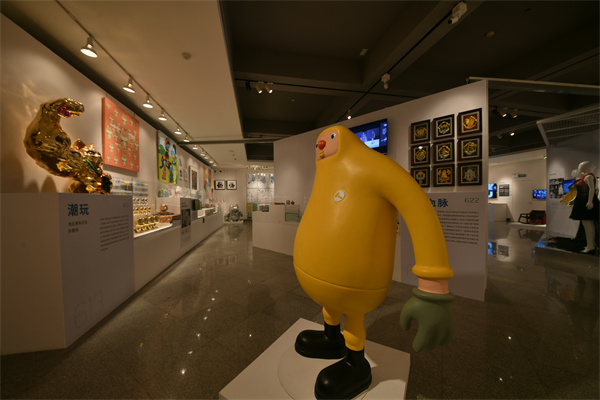

As its theme "New Start, New Wave" suggests, the show sheds light on possible solutions to all sorts of problems in society to inspire new ways of living, such as the developments of high-speed maglev trains and exoskeletons, a kind of wearable robotic device to help people regain mobility.
The designs on show reflect people's emerging needs and changing values in a new time, says Wang Dawei, a co-curator of the exhibitions and deputy director of the graphic design committee, China Artists Association.
"Essentially, design is a cultural phenomenon. And a recent orientation in the field is to make full use of our traditional cultures and to herald the formation of new aesthetics," he says. "Above all, good design raises the public awareness of aesthetics and, in return, people set higher standards for the design industry to meet."
Carrying on Chinese cultural values is not an abstract concept, but a practical need in which design can play a bigger role, according to Hang Jian, another co-curator of the exhibitions and a design professor at the China Academy of Art in Hangzhou, Zhejiang province.
He says there are such examples at the exhibitions, for example, creative products incorporating folk arts and crafts which promote rural vitalization and an eco-friendly lifestyle, and facilities designed for residential communities and subways that consider the needs of seniors and people with disabilities.
A special section at the show is dedicated to the design sector in the Guangdong-Hong Kong-Macao Greater Bay Area. Chen Xiangbo, director of the Guan Shanyue Museum, says the area has produced cases to prove that design is a force to continuously invigorate cities, reaching out a hand to shared traditions and another to connect with the younger community.